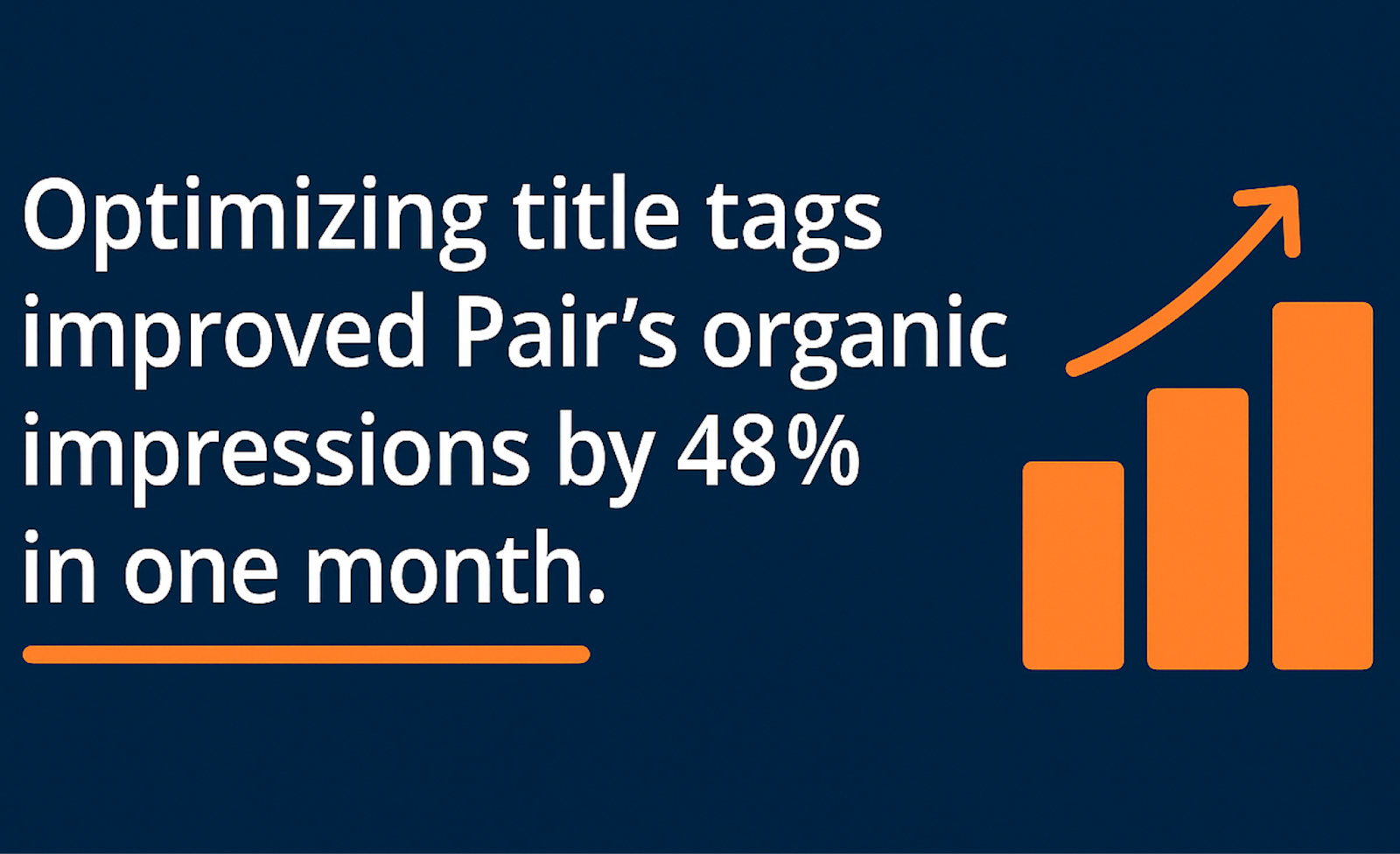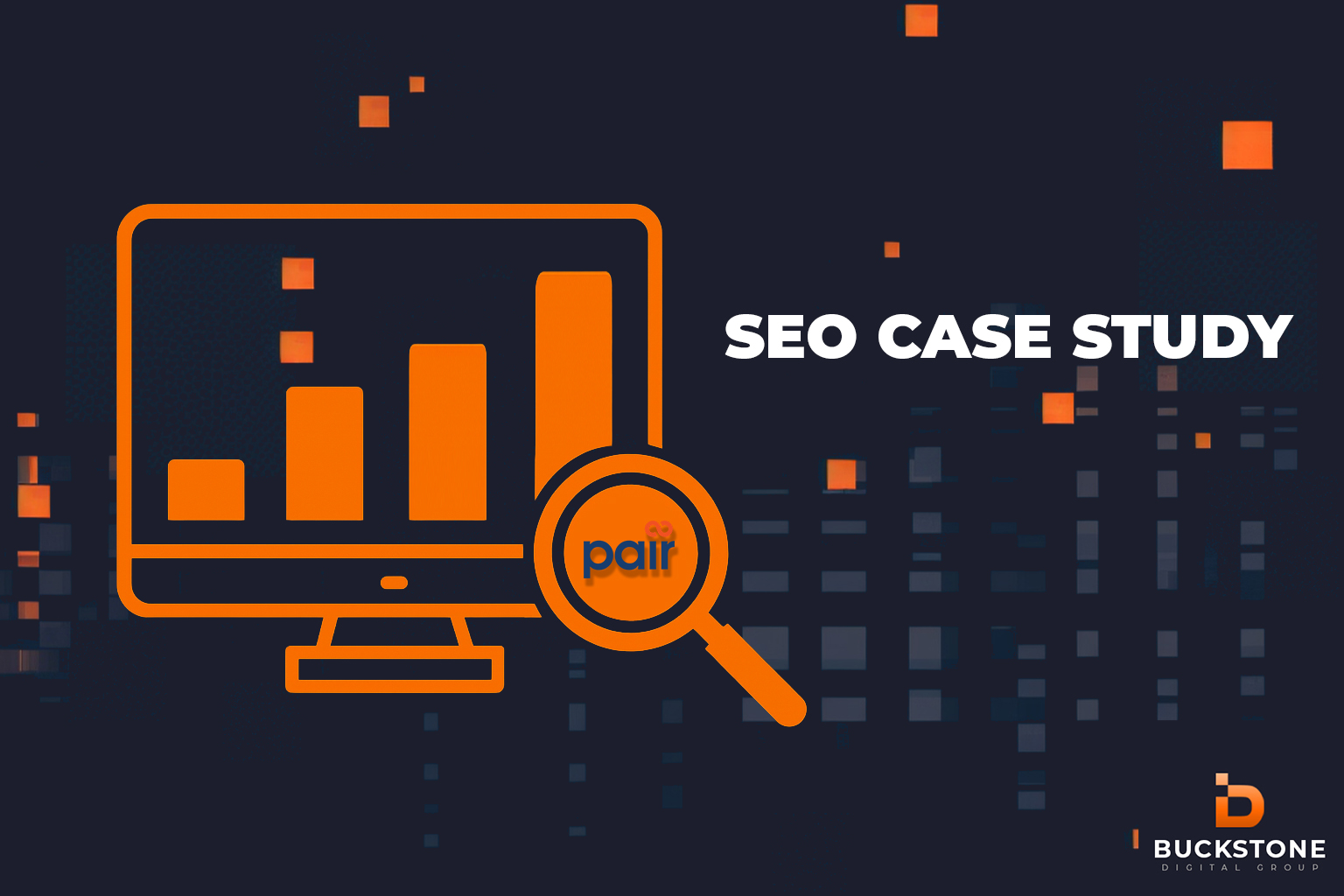Getting your website to show up in search results is tough. Convincing someone to actually click your link? Even tougher. But one of the easiest—and most effective—ways to tip the odds in your favor is by optimizing your title tags and meta descriptions. That’s exactly what we did for Pair Networks, a domain registrar and website hosting service, and the results speak for themselves.
What Are Title Tags and Meta Descriptions?
Title tags are the clickable headlines you see in search engine results pages (SERPs). Meta descriptions appear just below and provide a quick summary of what the page is about. While title tags directly influence rankings, meta descriptions help drive click-through rates. Together, they play a huge role in how visible and enticing your pages are in search results.
Before: Limited Reach and Declining Performance
Before we stepped in, 26.7% of Pair Networks’ organic clicks came from just five branded keywords:
- Pair Networks
- Pair hosting
- pair.com
- Pair
- Pair com
This was a clear signal that Pair was struggling to reach new audiences organically.
Looking at the six months leading up to our engagement:
- Branded searches dropped 21% in impressions, 9% in clicks, and 25% in CTR.
- Non-branded searches saw a 6% decrease in impressions, a 26% drop in clicks, and a 14% dip in CTR.
- Over the past year, 65% of all organic traffic came from searches for variations of “Pair.”
Despite this, their site appeared over 450% more often for high-intent, non-branded queries like “shared hosting” and “WordPress hosting” compared to their branded terms. The opportunity was clearly there—we just needed to unlock it.
The Action Plan: April Title Tag Overhaul
In April, we updated the title tags on 17 of Pair’s pillar pages. We targeted title tags specifically because Pair already had strong domain authority in the hosting industry—an advantage they weren’t fully leveraging. That authority gave us the confidence to aim for highly competitive, non-branded keywords with significantly higher search volumes, knowing the site had the credibility to compete.
Here are a few standout examples:
- Original: Pair Networks (Search Volume: 590)
- Updated: Buy A Domain | Website Hosting | Custom Web Design (Search Volume: 37,200)
- Result: Exposed to 36,610 more monthly searches.
- Original: Paired Up – Pair Networks (SV: 1,070)
- Updated: Website Design | Website Maintenance | Pair Networks (SV: 46,380)
- Result: Exposed to 45,310 more monthly searches.
- Original: Pair Site Builder – Pair Networks (SV: 590)
- Updated: Drag and Drop Website Builder | No Code Website Builder (SV: 2,180)
- Result: Exposed to 1,590 more monthly searches.
The original title tags were a missed opportunity—they mostly just listed the name of the service, which isn’t how most people search. Users already familiar with “Pair Site Builder” are likely to type the URL directly or navigate straight to the site, making those titles redundant in search results.
More importantly, they weren’t descriptive, so they gave no real incentive for someone unfamiliar with Pair to click through. In contrast, the new title tags clearly explain what the service does, making it easier for users searching for tools like drag-and-drop or no-code website builders to discover and engage with Pair’s offerings.
Meta Descriptions: Missed CTA Potential
We took a similar approach with the meta descriptions. While the originals offered some basic description of the pages, they didn’t take full advantage of the available character count.
Additionally, they lacked strong calls to action that could compel a user to click. Our updated meta descriptions are more informative and include persuasive language designed to entice searchers. This helps users who may not know about Pair’s services understand the value of what’s offered—and gives them a clear reason to click through.
Results: May Metrics That Speak Volumes

One month after implementing the updates:
- Non-branded searches saw a 48% increase in organic visibility.
- Five keywords saw the largest growth in impressions, adding up to 24K more views:
- Web hosting
- Website hosting
- WordPress hosting
- Best WordPress hosting
- Hosting
- Six of the seven top-growing pages had optimized title tags and meta descriptions.
Pair’s existing domain authority helped the new title tags perform quickly, proving that going after competitive, high-volume keywords was the right move.
In just one month, Pair rankings improved 14.4%. And compared to last year, organic traffic rose 19.8% thanks to better alignment with high-value search terms. Together, these improvements have helped Pair save an estimated $10.3K per month in ad spend.
Final Takeaway: Small Tags, Big Results
Optimized title tags and meta descriptions are crucial for improving visibility and traffic in search engines. This case study proves that even small adjustments to your on-page SEO can have a major impact. And while these changes were key, they’re just one piece of the puzzle. Structured data, site health, and other SEO best practices also played a role in these outcomes—and we’ll dive into those next. If you’re looking for expert help implementing changes like these, BuckStone Digital Group is here to help.
Want to dive deeper into title tag strategy?
Check out our guide to writing SEO title tags for best practices, real examples, and a title tag testing tool to preview how your titles will appear in search results.
Reach out to BuckStone Digital Group and let’s turn your site into your greatest asset.

